 |
| My least favorite view |
There is a network of trails here made by both pua'a and people riding ATV's and dirt bikes that is like a maze. I'd already made an exploratory trip back here a week or so before that hadn't worked out but I had a new route in mind. Bushwhacking up the ridge I searched for a trail that my research had turned up from about 12 years before. After about 45 minutes of cursing and zigzagging up the ridge I finally found an old trail.
The views of Kawainui Marsh below were stunning.
Further up the ridge I found myself surrounded by Akoko. Some of them were as tall as I am and I've never seen them in the Kailua area before. There was also Ulei a far more common indigenous relative of the rose and an couple Akia too. It was nice to see that despite the almost completely alien species that have taken over the Kailua area there were a few natives still lurking up here.
Continuing up the crest I could see the efforts of Ameron Hawaii's Quarry at neighboring Mahinui Ridge across H-3. Butterflies fluttered their way from flower to flower paying me little attention but somehow always managing to thwart my attempts to get a good shot of them.
I made my way up the old path until I reached the Kapa'a Quarry. There were two signs warning me of the legal consequences of proceeding. Both appeared new and I got the sense that these weren't the typical decorative type, that these meant business. Curiously, the first sign included "No Soliciting" which struck me as odd considering I doubt many salesmen come up here.
The explosives warning got my attention but the sound of heavy equipment below me probably meant they weren't blasting. Kicking myself for wearing a bright orange shirt, I continued towards the Ko'olaus and onto a gravel road.
After wandering around for a while I was shocked to find an Ohia tree. This is the first one I've seen in any of the lower hills of Kailua although I've seen other reports of them on the adjacent ridge of Mahinui and the few Lehua Ahihi I've seen on Olomana. These lowland ohia are covered with fine silver hairs that help them cope with the dryer conditions and warmer climate. While not endangered or completely uncommon, this form of ohia must have been much more common before Hawaiian agriculture's slash and burn methods and then later the use of the area for ranching reduced their numbers all across O'ahu.
A few minutes later I spotted a big black pua'a with two sows and some keiki on the Ameron road below. I watched them for a while from my vantage point above while they rooted around near a small storage building. At one point the big black one flung one of the sows when she did something he didn't approve of. After a few minutes I tossed a stick down to see their reaction. They vanished into the brush with some grunts and I began searching for a way over to the summit.
It took a while but I finally found a route back to the ridge and got my first closeup of my goal. I'm not a rabid environmentalist but there's something that just doesn't feel right about what they've done here.
 |
| Pu'u Ulumawao, well, what's left of it. |
Even more surprising was that the northwestern side of the summit had a small grove of Ohia on it. It was a little disappointing to see that Ameron's activity had sliced right into it though. Looking at the picture above of the summit, the very edge on the right side is where they cut into that grove of Ohia. The roots are literally dangling in midair. Perhaps the Ameron folks haven't considered the name of the ili in which Kapa'a Valley falls... Ka `Ohi`a, meaning "the `ohi`a lehua trees are tabooed."
 |
| Ohia over the abyss... |
St. Stephen's Seminary off the Pali Highway. Interestingly enough, this was the site of the Castle family's first home, Paliku, which was sold in 1946 to the Catholic Church.
Ulupa'u Crater on the Mokapu Peninsula and the three ancient fishponds Nu'upia, Halekou and Kaluapuhi that separate Mokapu from Kailua and Kaneohe. There are many legends associated with this area but the most interesting one to me is the story of the first man who was created here by the gods Kane, Kaneloa, Ku and Lono from the red and bluish-black soil found there.
There on the eastern flank of Mololani, facing the sunrise and near the shoreline, the soil is red earth mingled with very tark bluish black earth. There is where the first man was made. That place was called in the old times Kahakahakea, but in these days it is Pahuna. There Kane drew the image of a man in the soil; he drew the image in the soil after the likeness of the Gods, with head, body, arms, legs, just like themselves in form. When the image was drawn in the soil Kanaloa said, "You will not get your man; you have not the power; I am the person who has power. " Kanaloa therefore made an image of earth just like Kane's image. Kane and his companions said, "Let your earth become man, " but no man came forth; his dirt figure of a man remained Iying there and it turned into stone. Kane then said to his fellow gods, Ku and Lono, "Listen, you two, to my words and to the words I speak in answer and do you two preserve them and listen. " Then Kane said, "Come to life, " "Live," responded Ku and Lono "Come to life, " said Kane, "Live, " said Ku and Lono. Then the dirt became a living man. When the first man was made, the gods took the house name Hale-kou (House of kou wood) which they had made, and there the first man lived; but the woman was not made. The man observed how his shadow followed his body going outside the house and coming into the house, and he ran to the beach of Nu'upia and Oneawa and found to his surprise that his shadow stuck to him. Now when this man had fallen asleep, as he awakened suddenly a pretty woman was at his side and he thought it was his shadow that was sticking to his side and that God had changed his shadow into a wife for him. He therefore gave her the name of Keakahulilani (the shadow made of heaven). This means that God had turned the soil of the earth into man. In various genealogies we often find other names given to this man; in some genealogies he is named Kumuhonua, in others Kulipo, in others again, Kumuuli, and in some Hulihana.
 |
| North view from Pu'u Ulumawao. |
I really like this angle of my favorite Ko'olau Poko summit Konahuanui with the section of the Pali Highway stretched out in front of it.
My second favorite Ko'olau Poko summit, Lanihuli. That hanging valley below the summit has captivated my imagination ever since I first looked down into it.
My new vantage point also provided another angle to admire the beautiful peaks of Olomana.
 |
| 'Ala'ala wai nui |
On the way back down I stopped near a rocky outcrop to check out these little 'Ala'ala wai nui. I'm not familiar enough with peperomia to tell which species but they've been tentatively identified by Forest and Kim Starr as Peperomia blanda, one of the most common of the dryland peperomia species.
Making my way back down the ridge I was treated to a quick passing shower which was just enough to cool me off on this sunny day and to put a couple drops on my lens during this shot of the ridge.
Later down the trail I got a decent view of Pahukini Heiau. Back when the Kailua landfill was open in the 1990's I'd visited this heiau although I really had no idea what it was I was looking at. It is said to have been built by the chief of the Ko'olaus, Olopana, who is famous for his battle with the half man, half pig god Kamapua'a who most people know from the Sacred Falls legend. Pahukini means many drums but other names associated with the heiau are M'okini, many lineages, and Makini, (Make ini) meaning many deaths. The former two associating it with the luakini practice of human sacrifice.
Leaving the ridge behind I made my way down via the crazy maze of trails and back to the Jeep which hadn't been broken into this time! Pu'u Ulumawao is a great place to visit but as my research later turned up it's completely on private property. Kapa'a Quarry Road isn't a great place to leave your car, as I found out the hard way, so if you follow in my footsteps take all the proper precautions. It may be possible to get permission from the owner to do some parts of this but with Ameron using explosives on their side of the ridge I don't see this one opening up anytime in the near future.
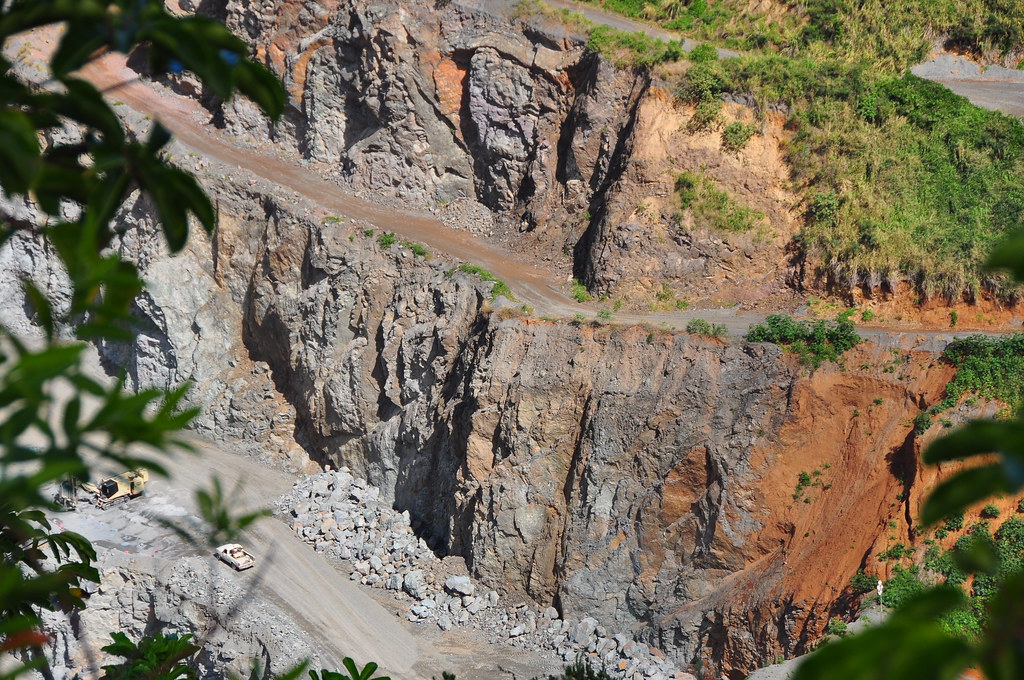
More pictures from this trail and others I've done can be viewed on Flickr. Aloha and mahalo for reading!
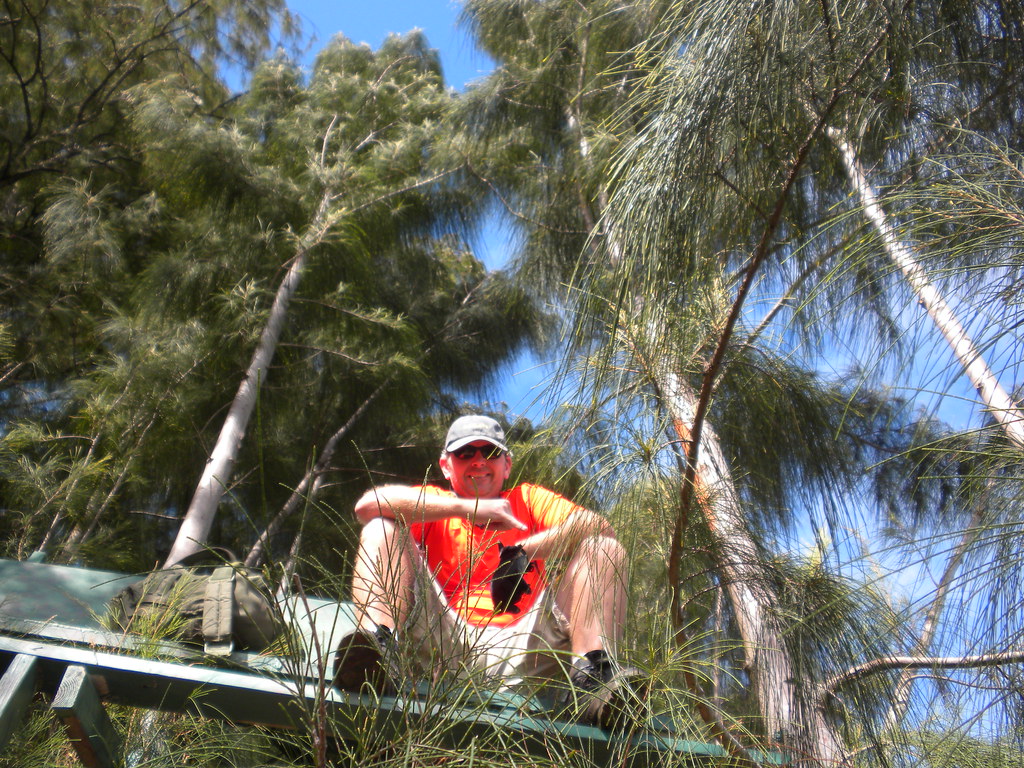 |
| A rest area! (despite my long winded writing I still keep a few secrets!) |
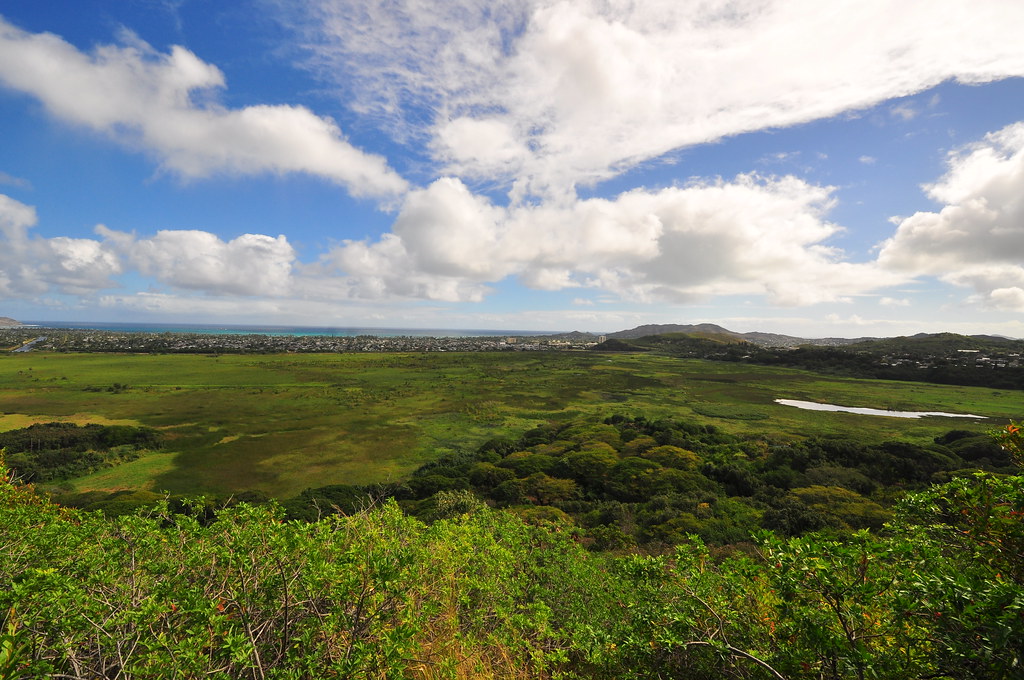
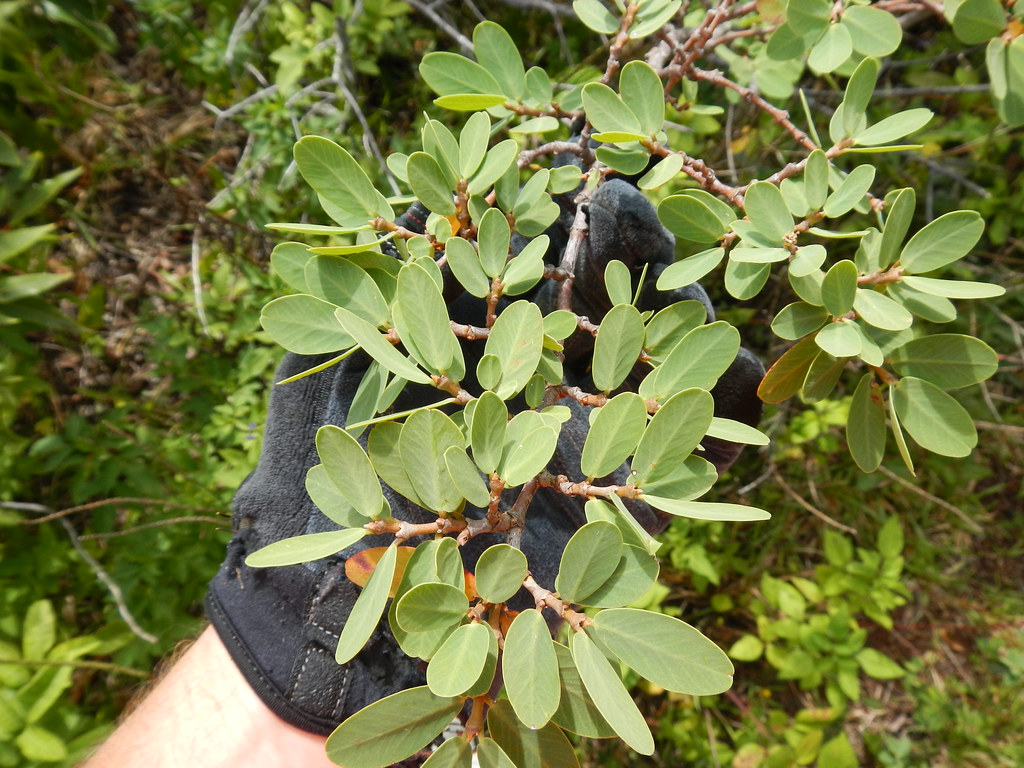
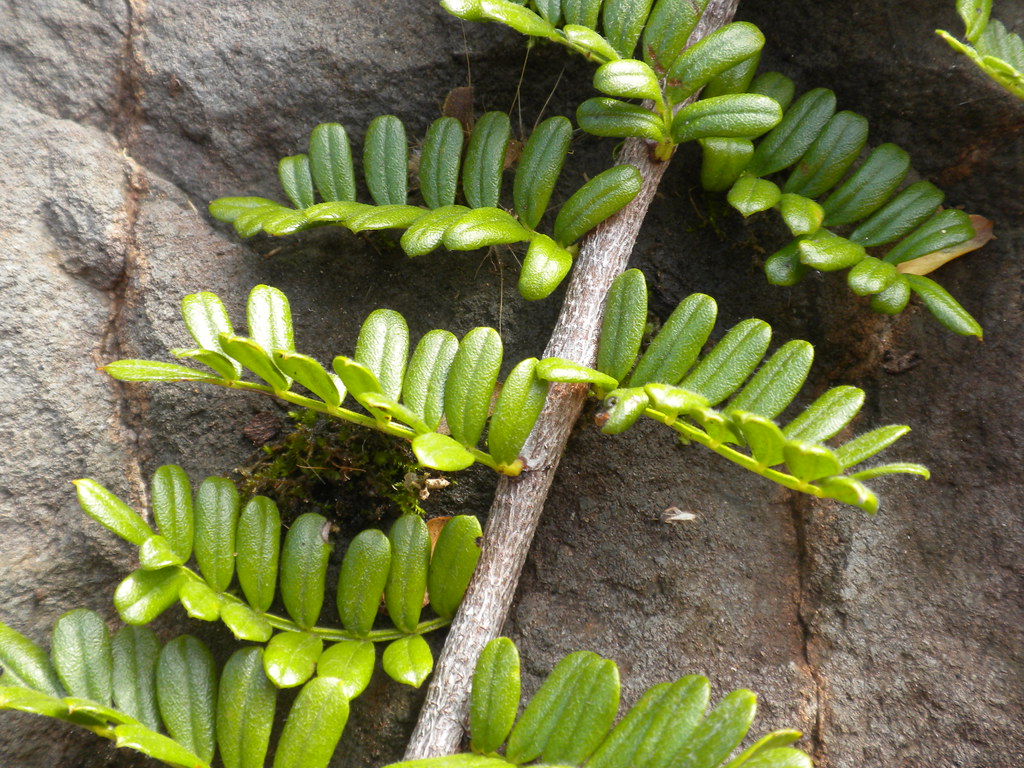
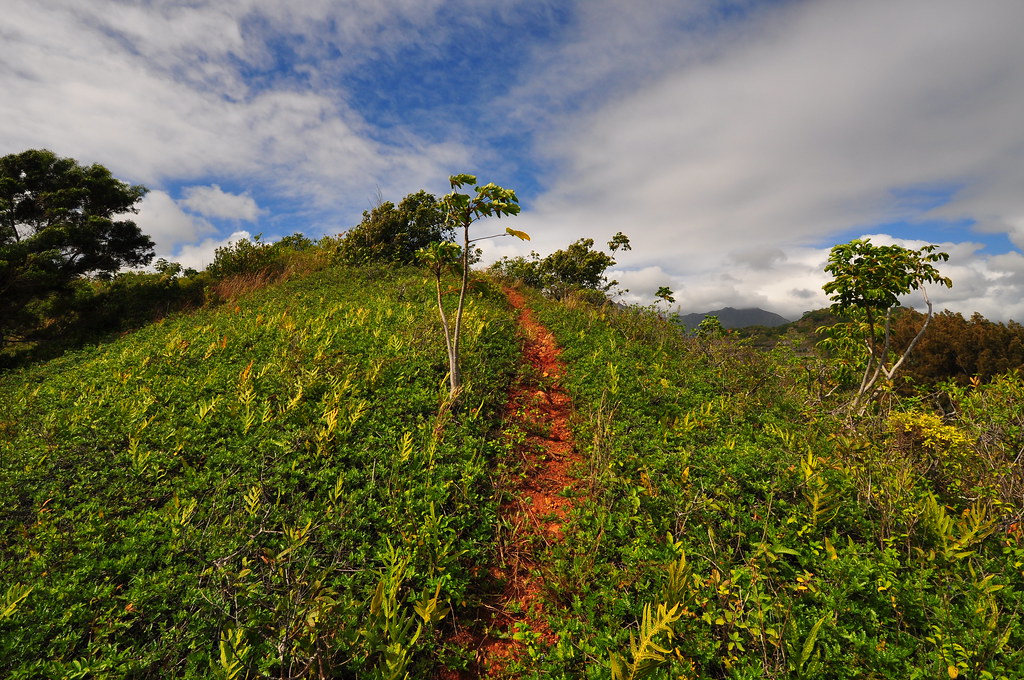
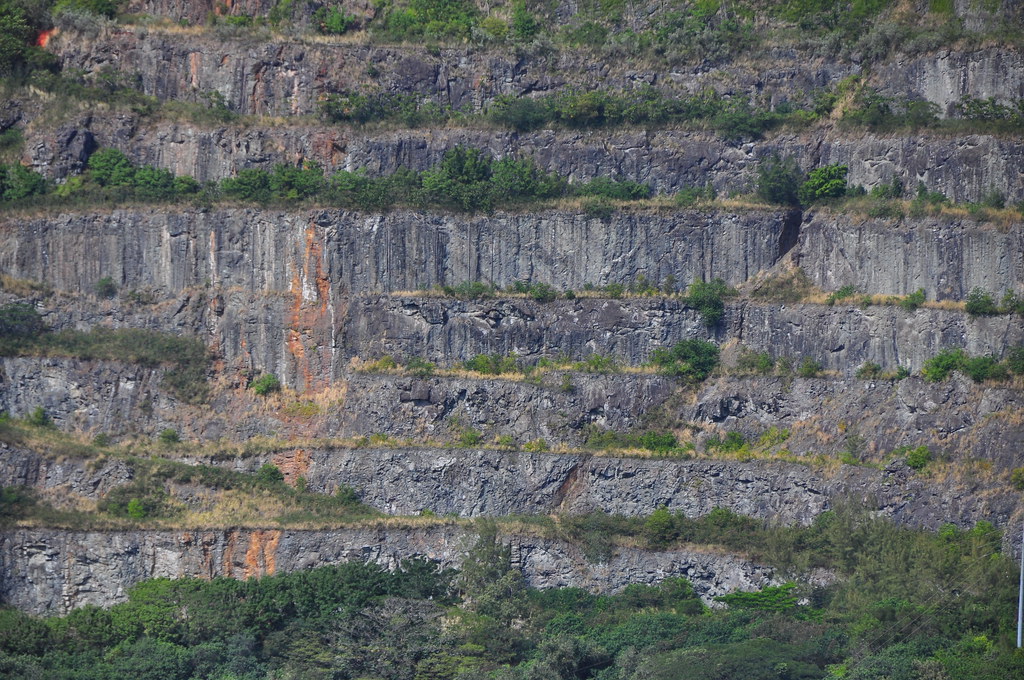


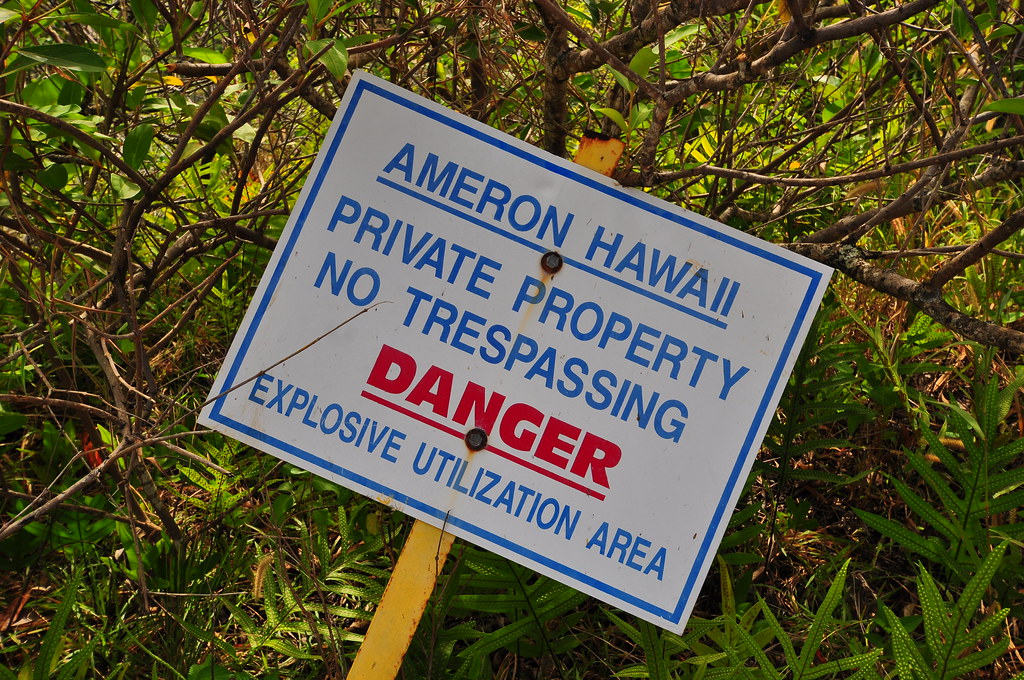
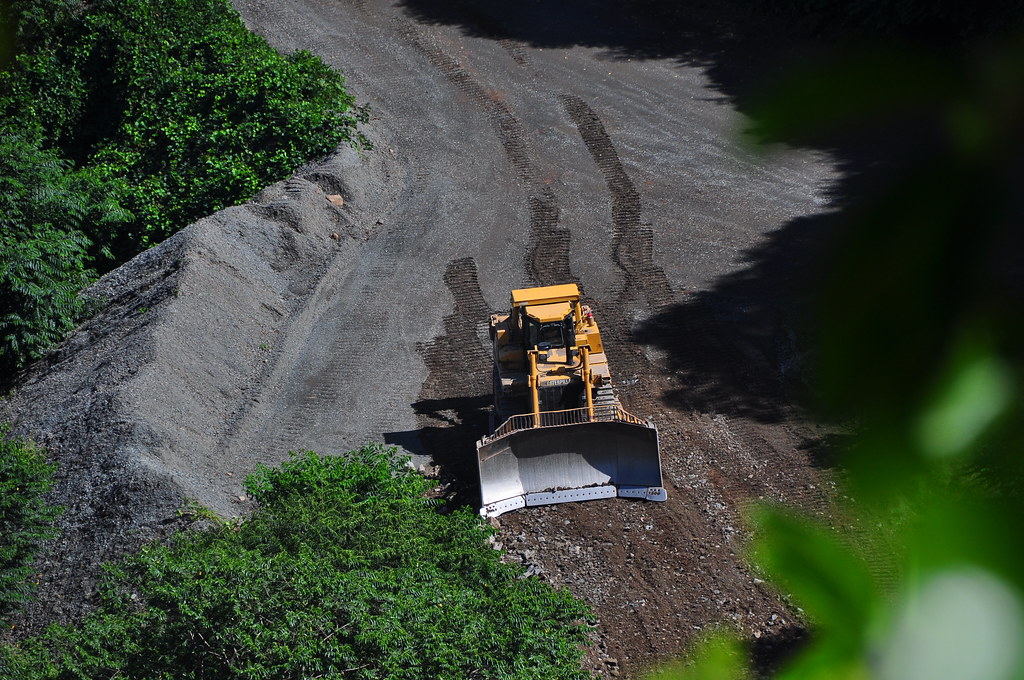


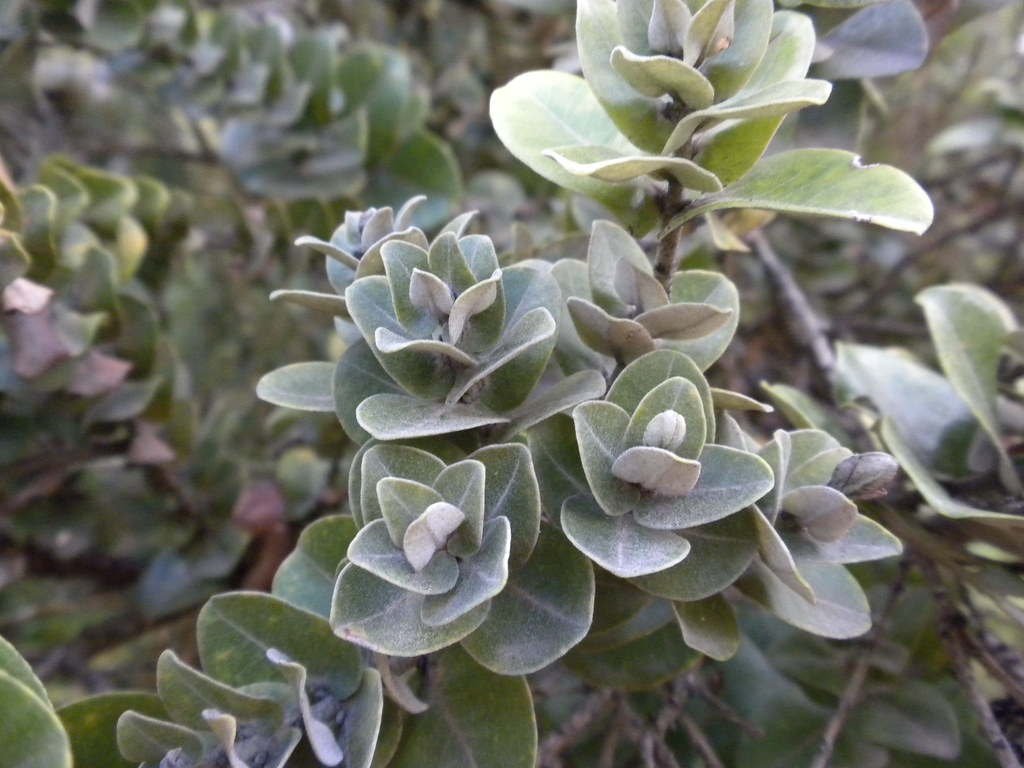
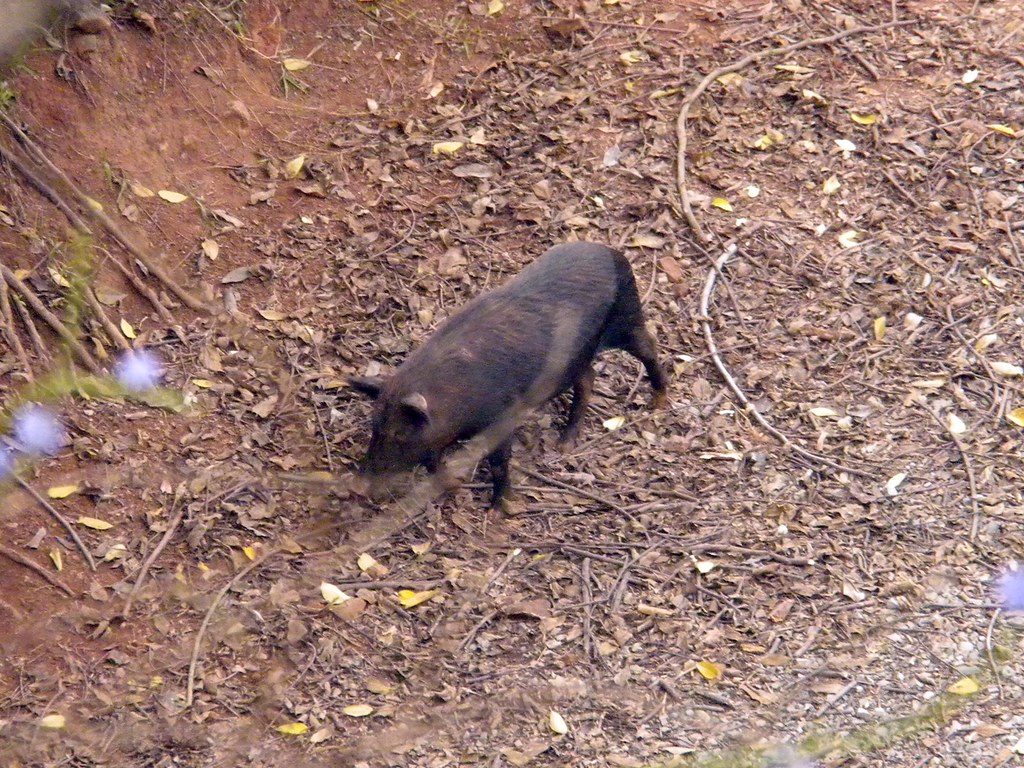



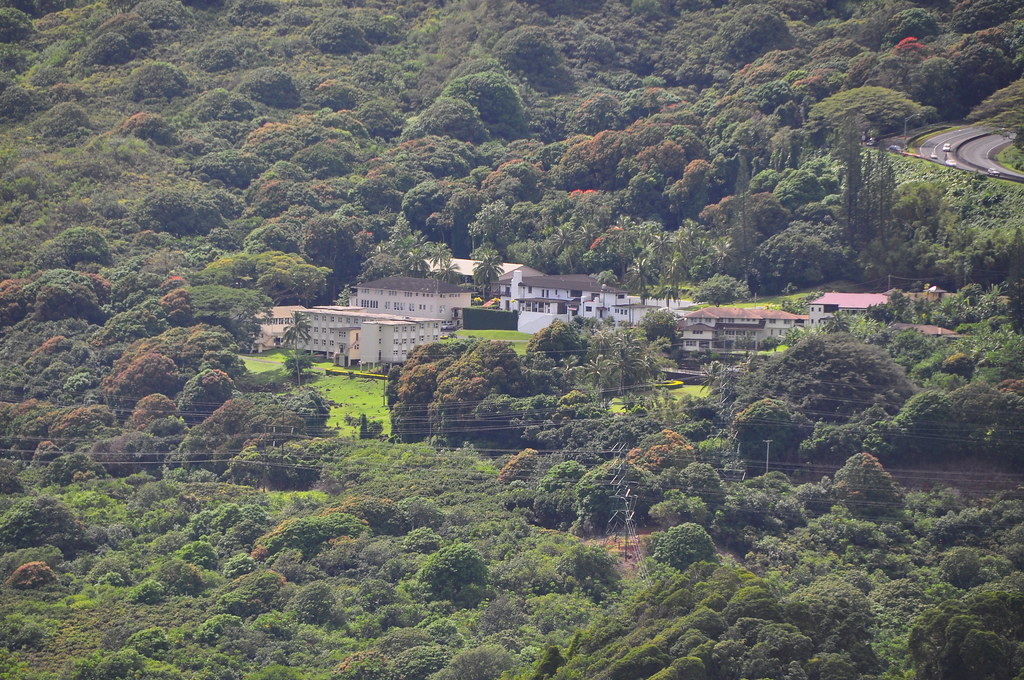

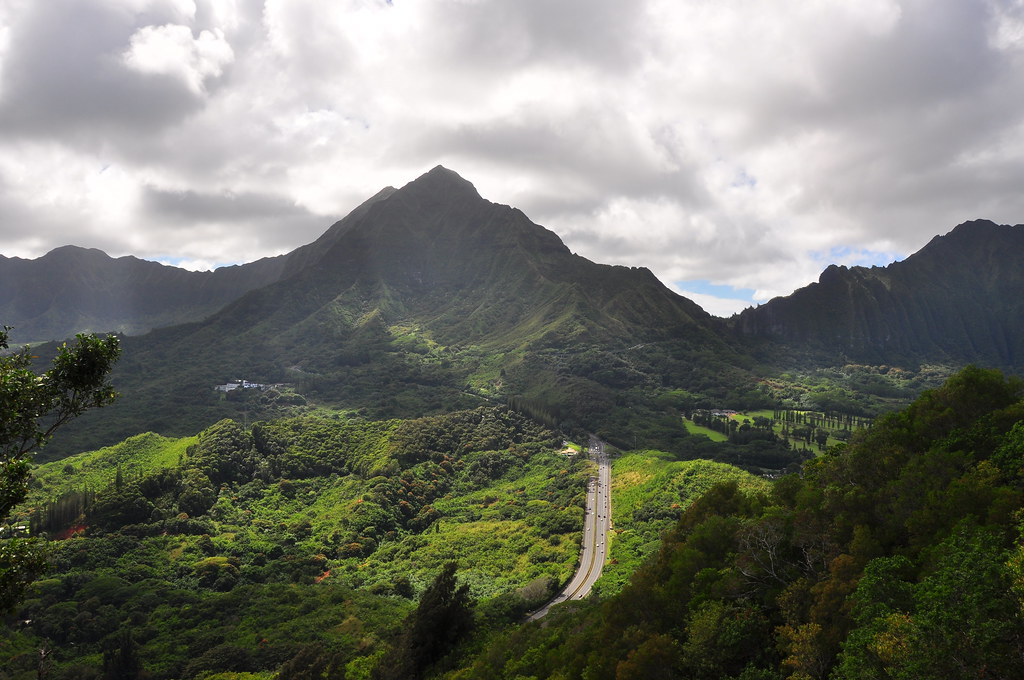




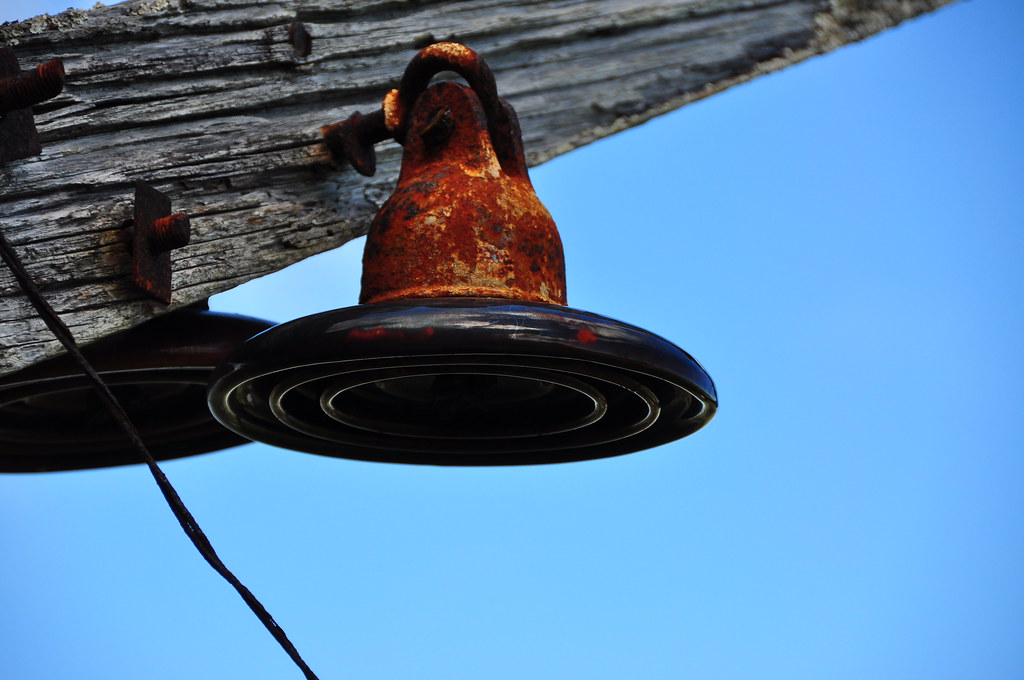
No comments:
Post a Comment